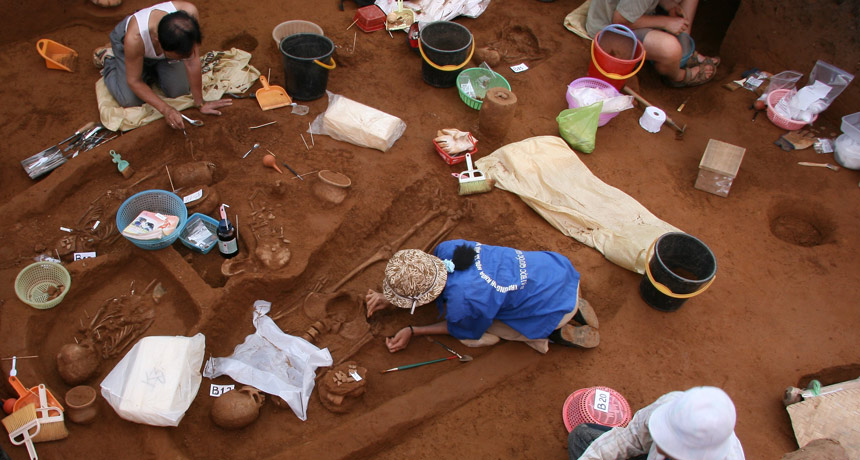Ancient Chinese farmers sowed literal seeds of change in Southeast Asia
DNA analysis of 4,000-year-old skeletons suggests migrants helped spread farming and languages

CHINA TIES Excavations at Vietnam’s Man Bac site, including this work in 2007, uncovered skeletons of farmers from around 4,000 years ago. DNA from these skeletons supports an idea that ancient migrants from southern China spread farming and languages throughout much of Southeast Asia.
Lorna Tilley







